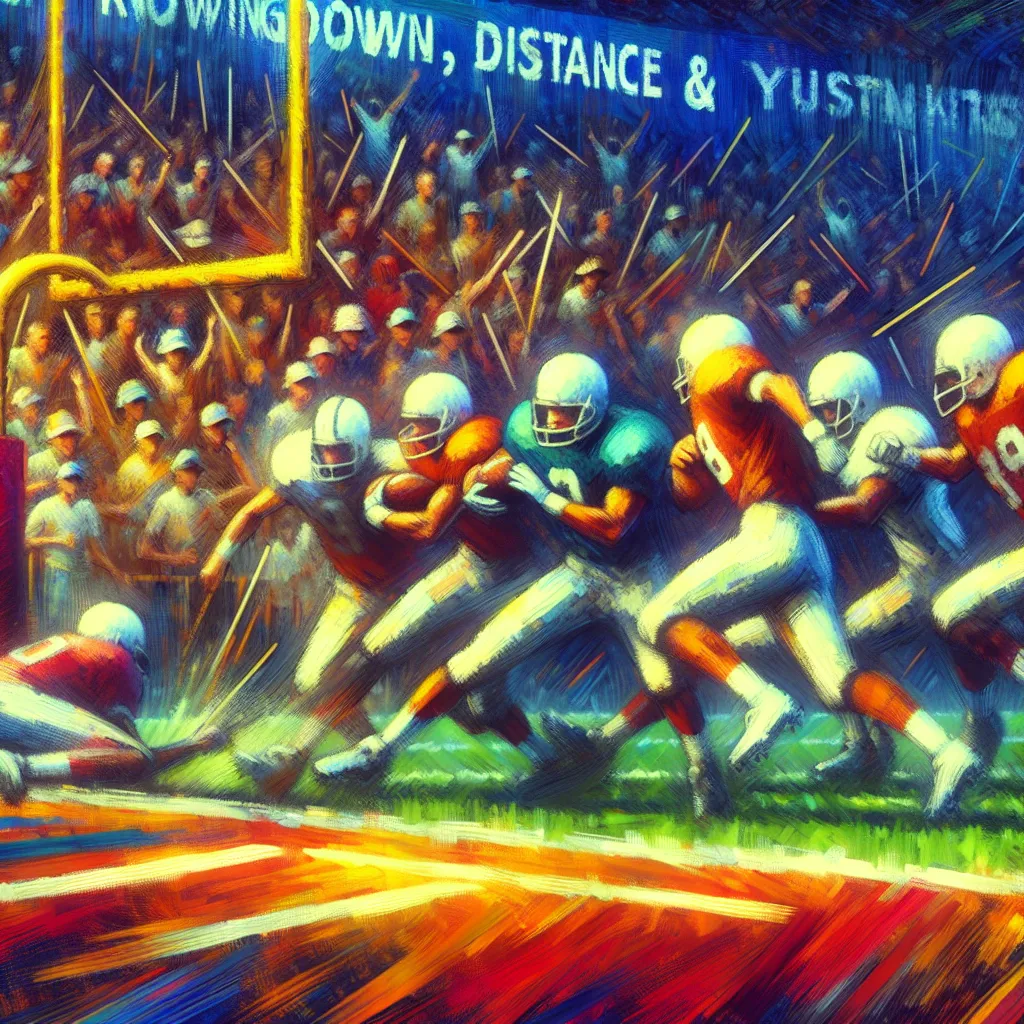
- Published on
- Authors

- Name
- Sports Tips
Situational Awareness: Knowing Down, Distance, and Game Context
The gridiron is a chessboard of tactical maneuvers where victory often hinges not just on physical prowess but on mental acuity. Situational awareness—understanding down, distance, and game context—can transform good players into great strategists. Let’s dive into the nuances of situational awareness and how you can use it to gain a competitive edge.
Down and Distance: The Lay of the Land
Breaking Down the Downs
Football is structured around a series of plays, each classified into four "downs." Each down provides a team with an opportunity to advance the ball at least 10 yards:
- First Down: The initial play in a new series. Strategy focuses on gaining positive yardage and maintaining field position.
- Second Down: After the first down, where adjustments are made based on the initial play. The aim might now shift to setting up a manageable third down.
- Third Down: Often a critical play that dictates whether the drive will continue or stall. Depending on the yardage needed, various strategies from safe play to more aggressive tactics are used.
- Fourth Down: Decision time! Teams may choose to punt, attempt a field goal, or, if the situation demands, go for it to retain possession.
Distance Matters
The distance needed to achieve a first down influences play-calling significantly:
| Yardage to Go | Strategy |
|---|---|
| 1-3 yards | High-percentage plays like runs or short passes |
| 4-7 yards | Balanced approach; both run and pass options |
| 8+ yards | Likely passing plays, including vertical threats |
Game Context: The Bigger Picture
Understanding game context involves recognizing the overall scenario:
- Score Margin: Whether you're leading or trailing can swing your strategy from conservative to aggressive.
- Clock Management: Controlling the clock can keep opponent offenses off the field and manage the game's tempo.
- Field Position: Whether you are backed up against your own end zone or within striking distance of scoring impacts risk assessment.
Decision-Making: The Art of the Call
Smart decision-making incorporates a blend of player skills and coaching wisdom:
- Read the Defense: Identifying defensive formations and likely blitz packages.
- Adaptability: Changing plays at the line of scrimmage based on the defensive alignment.
- Risk vs. Reward: Balancing the potential gain of a risky play against the consequences of failure.
Case Study: The Perfect Drive
Let's analyze an ideal scenario where situational awareness pays dividends.
- 1st and 10 at Own 20: Start safe with a run, gaining minimal yardage (2 yards).
- 2nd and 8: Quarterback executes a play-action pass to the tight end for 7 yards, setting up a manageable third down.
- 3rd and 1: Call a quarterback sneak for an easy first down.
- Repeat process, adapting to defense, until reaching the red zone:
- Patience: Avoid high-risk plays unless absolutely necessary.
- Utilize Clock Management: Especially crucial if protecting a lead late in the game.
Conclusion
Mastering situational awareness is about more than just knowing the playbook. It requires understanding the flow of the game, the importance of each moment, and making decisions that balance both immediate gain and long-term advantage. Whether you’re a player looking to elevate your game or a coach aiming to guide your team more effectively, honing this skill can make all the difference on the scoreboard.
Stay smart, stay sharp, and dominate the field!
Ready to boost your game IQ? Stay tuned for more insights on player tactics and coaching strategies! 🚀🏈
